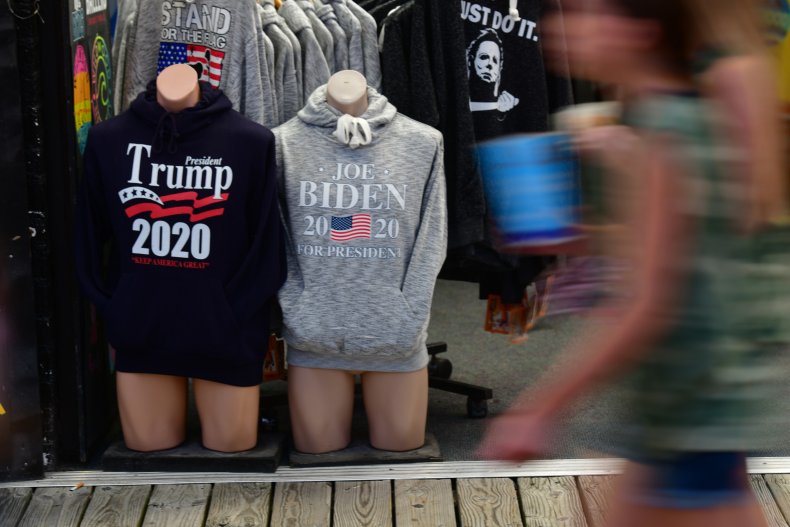Absent any last-minute surprise, voters in November will have to pick whether they want Donald Trump or Joe Biden to be the president of the United States for the next four years. They are remarkably different in just about every way possible, with dramatically different visions for the nation’s future.
How those differences are expressed and explained is largely a function of the media. Up to now, the coverage has generally kind to Biden, while, it can be argued, the mainstream media is in open revolt against the idea of Trump winning a second term. The pro-Trump outlets, few though they may be, cannot be expected to treat the former vice president very well either.
The battle lines have been drawn, and, frankly, this leaves the American people at a distinct disadvantage. They have nowhere to go to find honest information brokers. The polarization of the press corps makes it unlikely the media can be relied upon, whatever the candidates themselves may say, to report accurately about either candidate’s position on the issues of the day.
The only way to avoid the conundrum this will cause, and thanks to the proliferation of social media and internet-based broadcasting, is for the candidates to go directly to the voters as often as possible. Both campaigns are already doing this. The Trump campaign has established a nascent broadcast network of its own that sends our original programming to counter the national narrative established by the networks. Biden, who largely remains inside his home because of the coronavirus, has also taken to giving interviews over apps that allow those who watch to hear his views without having them first feed through an editor’s filter.
That’s a good start, but, for the most part, the only people paying attention to these narrowcasts are the media, who dutifully report what they want, and the people who have already made their choice. Both campaigns are communicating to the faithful—which works better for Trump, who polls show has the approval of 90 percent or more of GOP voters than Biden, who is enthusiastically backed by only about two-thirds of Democrats.
This brings us to the presidential debates, which, in most previous elections, have amounted to little. There were times when they were important. In 1980, Ronald Reagan used his one debate with President Jimmy Carter to prove he was not the loose cannon the Carter campaign and much of the media were saying. In 1988, Massachusetts Governor Michael Dukakis likely torpedoed his presidential aspirations when, in answering the first question asked him by CNN’s Bernard Shaw, said, hypothetically, that he would not want a man who raped and killed his wife, Kitty, to receive the death penalty.
The Obama-Romney and Trump-Clinton debates may have been entertaining, but they didn’t little to move the voters’ perceptions of either candidate. What they did do was remind Republicans how things are generally stacked against them by the Washington press corps, such as when moderator Candy Crowley intervened in a back-and-forth between Obama and Romney to Obama’s benefit or when ABC’s Martha Raddatz jumped on Trump several times so Clinton didn’t have to.
For the upcoming general election, the Commission on Presidential Debates has recommended three encounters between Trump and Biden and one between Vice President Mike Pence and whomever Biden chooses as a running mate. The Trump campaign wants four. Neither proposal is sufficient. Instead, there should be eight debates, one every other week, between the principals in which they go head-to-head without the media and without a moderator who does anything but keep time.
Trump and Biden are both, and this is meant with the utmost respect, big talkers. They’re not shy about making their views known and know how to communicate what’s on their mind. It would be refreshing to see them go head-to-head for an hour each time on a single topic, four picked by one campaign and four picked by the other. It’s a formula for a robust discussion that will get, hopefully, at what’s on the minds of the candidates and the American people.

In previous debates, the reporters asking the questions—when they’re not playing “gotcha”—ask questions about subjects of importance to the folks who live in the Acela corridor and in the wealthy environs in and around Los Angeles and San Francisco. No one ever asks a candidate to defund ethanol subsidies or explain their views on the right to carry concealed firearms or whether they believe lower taxes and deregulation stimulate growth and lead to job creation. Instead, we get questions about banning firearms, U.S. policy toward the war in Syria and LGBTQ equality. All are important, of course, but some are more important to the people living in the heartland of American than others.
In this campaign, more than any in recent memory, we don’t need media filters and moderator mumbo-jumbo to help us decide who should be president for the next four years. We need to see as much of the candidates as we can. More debates, shorter in duration, without media stars preening for attention would serve us all well.